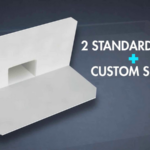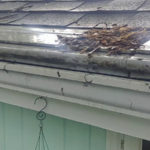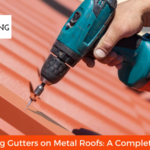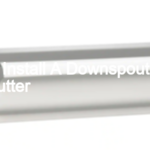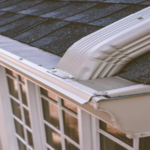- Begin by finding the gutter downspout you wish to extend.
- If the downspout is made of metal, use a hacksaw to cut it to the desired length.
- If the downspout is made of plastic, use a sharp knife to cut it to the desired length.
- Once the downspout is the desired length, fit the extender onto the end of the downspout.
- Use screws or zip ties to secure the extender in place.
- That’s it! Your gutter downspout is now extended and will be able to funnel water further away from your home.
Do downspout extenders work?
Downspout extenders are a type of accessory that can be attached to the end of a downspout in order to extend its reach. They are typically made of plastic or metal and come in a variety of lengths. While downspout extenders are not required in order for a downspout to function properly, they can be beneficial in certain situations.
One common reason to use a downspout extender is to redirect runoff away from foundation walls. If water is allowed to pool around the base of a home, it can lead to structural damage over time. By extending the downspout, the water can be directed a few feet away from the house, which can help to prevent this type of damage.
Another reason to use a downspout extender is to prevent erosion. If water is allowed to flow directly from the downspout onto the ground, it can cause erosion over time. By attaching an extender to the end of the downspout, the water can be directed to a specific area, such as a garden bed or a lawn, which can help to prevent erosion.
Downspout extenders are relatively inexpensive and can be found at most home improvement stores. They are typically easy to install and do not require any special tools or skills.
How do you extend a gutter drain pipe?
- To extend a gutter drain pipe, you will need to measure the length of the pipe that you need to extend.
- Cut a piece of pipe that is the same diameter as the pipe you are extending.
- Connect the two pieces of pipe together using a coupling.
- Make sure that the connection is secure and that there are no leaks.
What do you use for downspout extensions?
There are a few different types of downspout extensions available on the market. The most common type is the plastic downspout extension, which is attached to the end of the downspout and extends it out away from the house. This type of downspout extension is available in a variety of colors to match the exterior of your home.
Another type of downspout extension is the metal downspout extension. This type of extension is made of aluminum or steel and is attached to the end of the downspout. The metal downspout extension is available in a variety of colors to match the exterior of your home.
The last type of downspout extension is the rubber downspout extension. This type of extension is made of rubber and is attached to the end of the downspout. The rubber downspout extension is available in a variety of colors to match the exterior of your home.
How do you attach a gutter elbow to a downspout?
To attach a gutter elbow to a downspout, you will need to use a ladder to reach the gutters. Once you are at the gutters, you will need to use a screwdriver to attach the elbow to the downspout. Make sure that the elbow is pointing in the correct direction before you screw it in place.
How do you keep downspout extensions from blowing away?
One way to keep downspout extensions from blowing away is to use zip ties or duct tape to secure the extension to the downspout. Another way is to use a weight, such as a brick or a rock, to keep the extension in place.
If the extension is made of lightweight material, such as plastic, it may be necessary to use multiple zip ties or pieces of duct tape to keep it securely in place. For heavier extensions, one zip tie or piece of duct tape should be sufficient.
Once the downspout extension is secured, it is important to check it regularly to ensure that it is still in place and has not become loose. If the extension does become loose, simply re-secure it using the zip ties or duct tape.
By following these simple tips, you can keep your downspout extension in place and prevent it from blowing away.
How long should downspout extensions be?
- The downspout extension should be long enough to reach the ground.
- If the downspout is going to be installed on a slope, the extension should be long enough to reach the ground at the bottom of the slope.
- The downspout extension should be installed so that it drains water away from the foundation of the house.
- The downspout extension should be installed so that it does not create a ponding area around the foundation of the house.
- The downspout extension should be installed so that it is not visible from the street.
Bottom Line
If your home is plagued with water damage from faulty gutters, you may want to consider installing an extender to your downspout. This will help to ensure that water is directed away from your home, and it can also help to prevent flooding. While this is a relatively simple project, it is important to follow the instructions carefully in order to avoid any potential problems.
